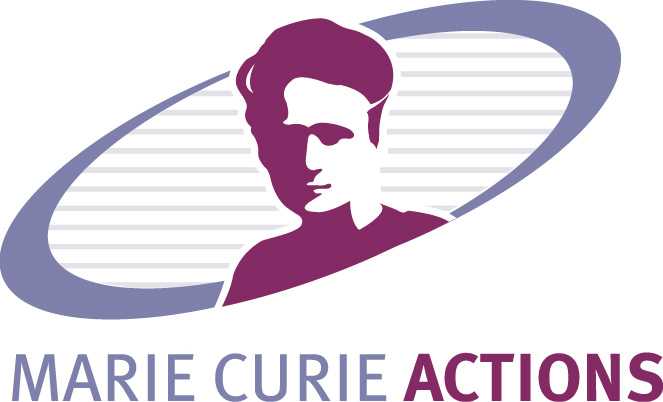
|

|
AquaMod - Modelling individual life histories and population dynamics of predatory aquatic insects: the role of body size
Welcome to the website summarizing my individual Marie Curie European Reintegration Grant (Project No 239543).
This project run between 7 September 2009 and 16 May 2013 and was funded through the FP7 Marie Curie actions.
Project summary
This project used a combination of empirical and theoretical approaches to unravel the role of body size in individual life histories, trophic interactions and community structuring in small fishless water bodies. It used predatory aquatic insects as the case study, because they play an important role in biomass transfer and are usually top predators in these habitats. The main taxonomic and functional groups include bugs (Heteroptera: Gerromorpha and Nepomorpha), diving beetles (Coleoptera: Dytiscidae), and larvae of dragonflies (Odonata). Interactions among these three dominant predator groups and their impact on community structure are insufficiently known. At the same time, they span a broad range of body sizes, exhibit varied adaptations to the aquatic environment, and are hence well suited to study the implications of body size for individual life histories and food web interactions.
The original objectives of this individual ERG project were as follows:
1. Development and analysis of size-structured models of population dynamics and life history evolution of predatory
freshwater insects in small fishless water bodies, with emphasis on a strong mechanistic underpinning for all
ecological and evolutionary processes accounted for in the models.
2. Empirical studies combining laboratory experiments and other data that would be used to parameterize
the models and test the applicability of probabilistic reaction norms to measure selected life history traits
in freshwater insects.
What have we done
During the duration of the project, the focus gradually shifted from modelling to empirical work, which became the main focus of the project. It was great to try something new and, together with my students and collaborators, collect experimental data that we have begun to use later on for the modelling. We carried out a number of laboratory and field experiments focused on the role of body size in predator-prey interactions, cannibalism and community assembly. Additional experiments investigated phenotypic plasticity with the aim to determine probabilistic reaction norms in selected species of freshwater insects. Modelling focused primarily on cannibalistic interactions, on the role body size in dispersal and community assembly, and on the role of predation risk in the evolution of life histories.
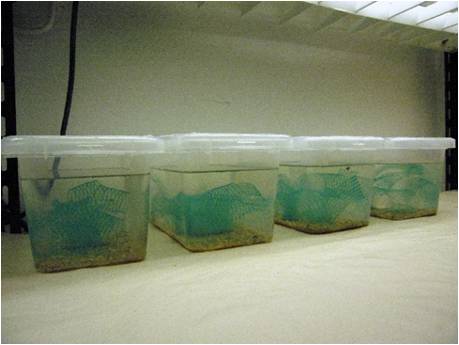
|
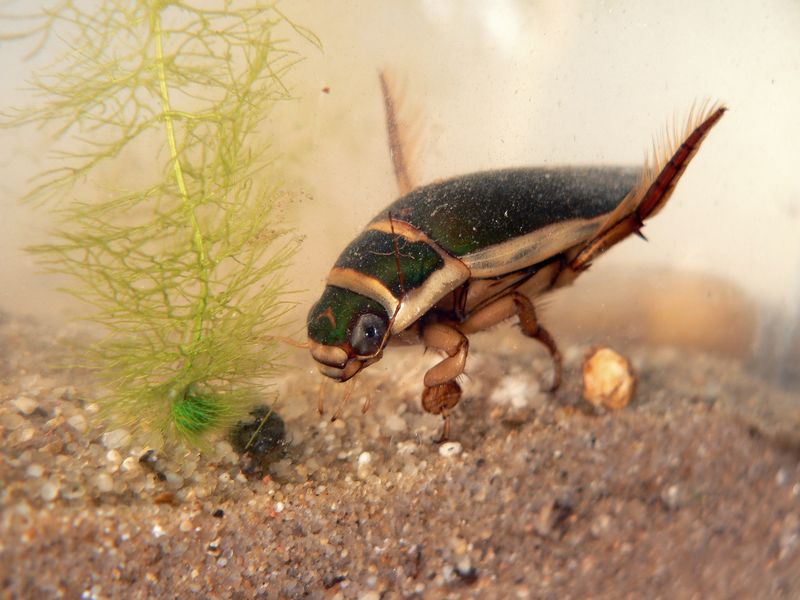
|
The results published so far show that body size is an important factor in the structuring of freshwater insect communities. Together with Jan Klecka, we showed that most methods used to sample aquatic beetles in the field are size selective and that this has consequences for studies of community structure and species inventories. We also showed that body size plays a key role in predation and cannibalism and that food webs in small standing waters are highly interconnected. We confirmed that predation in these systems depends strongly on predator-prey body mass ratio similar to other aquatic ecosystems. The main contribution of our experiments lies in the separation of body mass and other predator and prey traits. This study is of general importance and can be applied across other types of food webs and ecosystems.
Additional results (several manuscripts submitted and in preparation) provide insights in the role of habitat structure in predation and cannibalism among aquatic insects. They confirm previous classical studies on cannibalism in dragonfly larvae and extend them by showing how habitat complexity diminishes the strength of cannibalism. A modelling study on the role of body size in population dynamics of cannibalistic populations, based on the life history of predatory diving beetles, highlighted the importance of competitive abilities of differently sized individuals and the role of intraspecific competition in stability and persistence of cannibalistic populations. Another modelling study dealing with the role of size-dependent dispersal in community structuring showed that allometry of dispersal crucially affects the speed and predictability of the community assembly process.
A model of life history implications of the scaling between body size and growth showed that reproductive investment is a key but often overlooked factor in parameterizing growth curves used in studies of life history evolution. These results were also accommodated within a comprehensive overview of currently available empirical and theoretical literature on individual responses to predation risk.
Laboratory experiments were also established and completed to identify the utility of probabilistic reaction norms to quantify the extent of phenotypic plasticity and characterize life history transitions in freshwater insects. Mesocosm and field experiments were also initiated to test conclusions from laboratory studies and models in more natural settings with emphasis on the role of habitat complexity, predation risk and dispersal abilities on population dynamics and community assembly. Experiments always turn out to be more difficult than run and evaluate. This means that the first manuscripts based on these experiments are likely to be completed in late 2013.
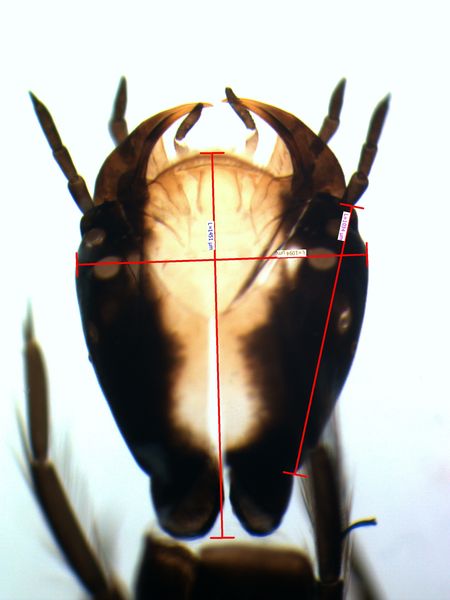
|
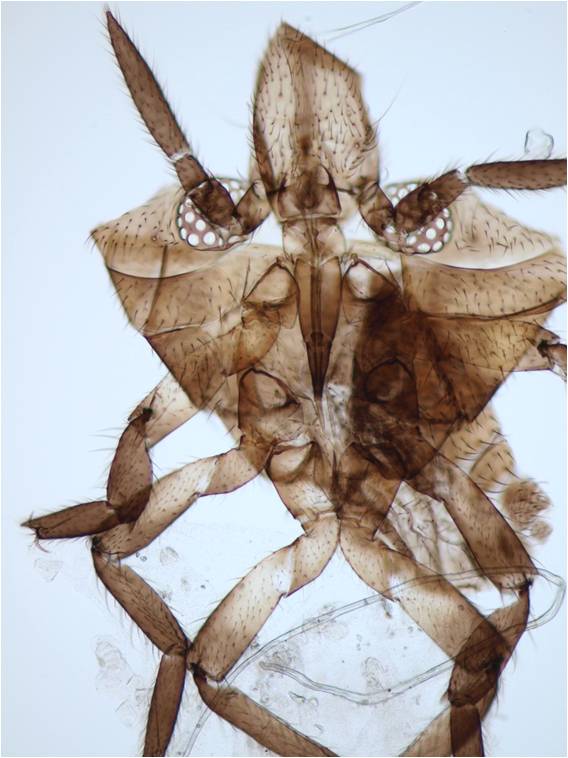
|
Overall, the project has demonstrated that body size has important implications for trophic interactions and
community structuring among aquatic insects. It has also provided results on the extent of phenotypic plasticity
in selected groups of predatory freshwater insects and its implications for life history evolution.
The resulting body of evidence provides novel insights into individual- and population-level processes in
predatory aquatic insects.
Dissemination activities
Results of the project were shown at 8 national and international conferences where I and my students presented nearly 20 talks and posters summarizing their work related to the project:- annual science conferences of the British Ecological Society in UK (2010-2012)
- conference of the International Society of Behavioural Ecology in Uppsala, Sweden (2012)
- conference of the German Ecological Society in Lueneburg, Germany (2012)
- conference of the European Pond Conservation Network in Berlin, Germany (2010)
- conference of the Czech Society for Ecology in Kostelec, Czech Republic (2011)
- joint conference of the Czech and Slovak Limnological Societies in Jasna, Slovakia (2012)
I also presented this research at an invited plenary lecture of the conference of the Slovak Zoological Society in Zvolen, Slovakia in December 2012.
I also gave lectures when I participated in Science Week coordinated by the Biology Centre AS CR in September 2012 and
presented my research including the Marie Curie ERG grant to students at three high schools in the South Bohemia region.
Publications (published and in press)
J. Klecka, D.S. Boukal (2013). Foraging and vulnerability traits modify predator-prey body mass allometry: freshwater macroinvertebrates as a case study. Journal of Animal Ecology 82: 1031-1041. [doi link]
J. Klecka, D.S. Boukal (2012). Who eats whom in a pool? A comparative study of prey selectivity by predatory aquatic insects. PLoS ONE 7: e37741. [open access]
J. Klečka, D.S. Boukal (2011). Lazy ecologist's guide to water beetle diversity:
Which sampling methods are the best? Ecological Indicators 11: 500-508.
[link]
Contact information:
Department of Ecosystem Biology, Faculty of Science, University of South Bohemia &
Biology Centre AS CR, Institute of Entomology, Laboratory of Aquatic Insects and Relict Ecosystems
Branisovska 31, CZ-37005 Ceske Budejovice, Czech Republic
tel: +420 387 772 327, fax: +420 387 775 367
email: my_surname AT entu dot cas dot cz
© 2009-2013 David Boukal | last modified 13 Aug 2013 | based on A. Viklund's template
